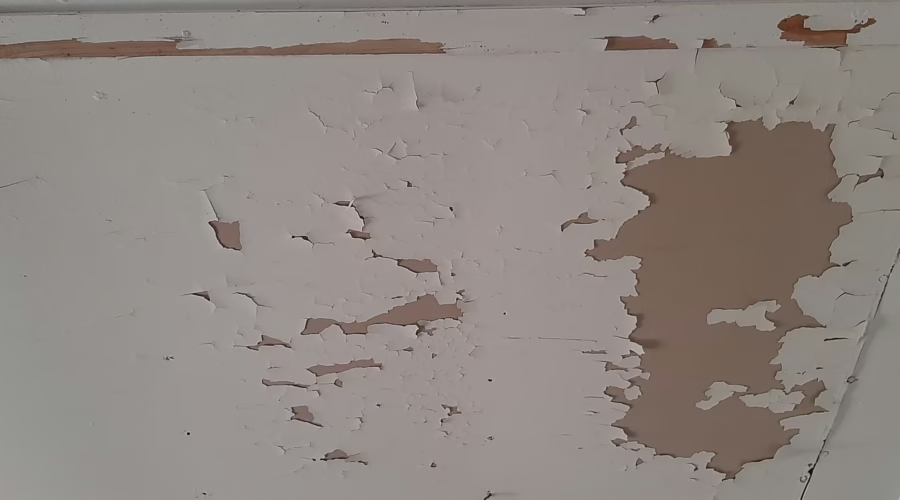Flaking Paint Overhead – A Silent Threat to Safety and Health in Bedrooms
Introduction
A bedroom should be a sanctuary—a safe and healthy place to rest and recharge. However, when property maintenance is neglected, even the bedroom can become a hazard. A photograph of flaking paint falling from the ceiling directly above a bed illustrates the dangerous and unhealthy conditions some occupants face. This is more than an aesthetic issue; it is a warning sign of deeper structural or environmental neglect.
The Risks of Flaking Paint
Flaking paint above a sleeping area presents multiple risks:
- Health Hazards
- Dust from deteriorating paint can cause respiratory problems, especially for those with asthma, allergies, or sensitivities.
- If the paint is old, it may contain lead, which poses serious health risks, particularly to children and pregnant women.
- Safety Concerns
- Flaking paint can indicate underlying moisture or structural problems, such as leaks or poor ventilation, that may compromise the building’s integrity.
- Mental Well-being
- Poor living conditions, including visible neglect, can negatively impact mental health, causing stress and anxiety.
Legal Obligations of Landlords and Municipalities
Neglecting to address flaking paint violates several legal provisions that ensure properties are safe and habitable:
- Rental Housing Act (1999)
- Section 5(1) requires landlords to maintain properties in a state fit for human habitation. Failing to address deteriorating paint violates this obligation.
- Occupational Health and Safety Act (1993)
- This act enforces safety standards in buildings, including adequate maintenance to prevent hazards like peeling paint and structural decay.
- Municipal Health Bylaws
- Municipalities are responsible for ensuring that properties meet local health and safety regulations. Flaking paint, particularly in sleeping areas, is a violation of these standards.
- Constitution of South Africa (1996)
- Section 24 guarantees the right to an environment that is not harmful to health or well-being, including safe and livable housing conditions.
Municipal Responsibilities
When conditions like flaking paint are reported, municipalities must:
- Investigate and confirm health or structural hazards under the National Health Act (2003).
- Enforce compliance by landlords or property owners with health and safety regulations.
- Take immediate action if such conditions pose an urgent risk to occupants.
Occupants’ Rights and Responsibilities
- Report the Issue
- Occupants should notify landlords and municipal health departments of the problem in writing, accompanied by photographic evidence.
- Legal Recourse
- If landlords or municipalities fail to act, occupants can escalate their complaints to housing rights organizations or pursue legal remedies under the Promotion of Administrative Justice Act (2000).
- Make the Issue Public
- In cases of prolonged inaction, raising public awareness through media or social platforms can create pressure for accountability and action.
What Flaking Paint Signifies
Peeling or flaking paint is often a symptom of larger issues, such as:
- Persistent leaks or moisture buildup.
- Poor ventilation leading to condensation.
- Substandard construction or aging infrastructure.
Ignoring these warning signs can lead to more extensive damage and greater costs to rectify, not to mention the continued exposure of occupants to health risks.
Conclusion
Flaking paint above a bed is not merely a cosmetic problem—it is a call to action. It demands the attention of landlords, municipalities, and the community at large to ensure that all living spaces meet basic health and safety standards. Neglect in addressing such issues undermines the dignity and well-being of those who call these spaces home.
Legal Context for the Right to Publish
This article is published under Section 16 of the Constitution of South Africa (1996), which guarantees the right to freedom of expression, including the right to receive and impart information. It also aligns with the Promotion of Access to Information Act (2000), which supports the public’s right to access and disseminate information necessary for the protection of health and rights. Finally, the Open Justice Principle affirms that public awareness of issues like hazardous housing conditions is essential to transparency and accountability.


